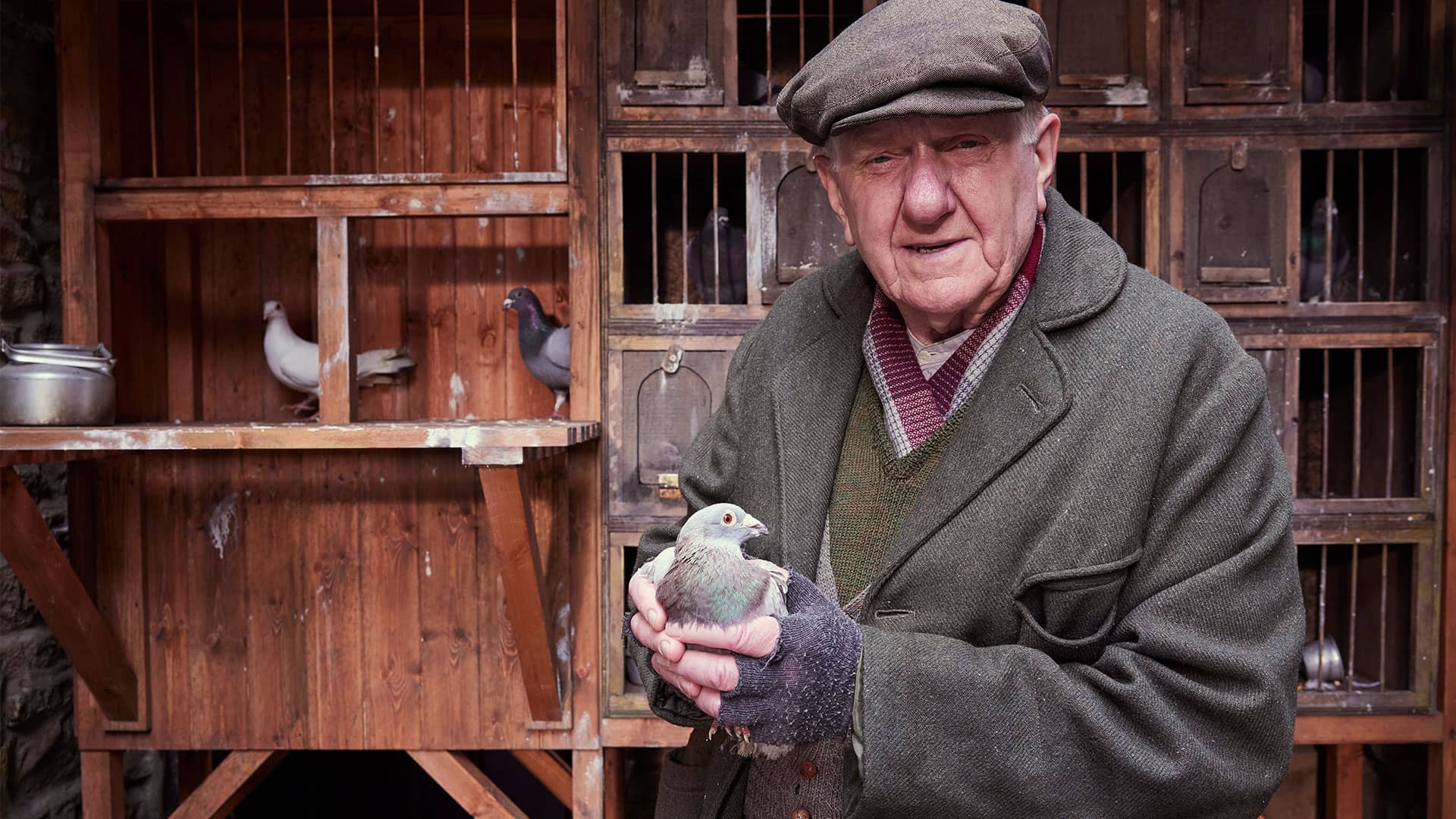Season 5 History: Homing Pigeons in WWII England


As WWI & II history enthusiasts, pigeon fanciers, and now All Creatures Great and Small viewers know, pigeons have made valuable contributions to war efforts, carrying crucial messages in situations where radio silence was required. Now, discover the surprising origins of homing pigeons in World War II England from All Creatures Great and Small’s official historian, Dr. Mark Roodhouse of the University of York.
As Siegfried Farnon points out to Tristan in All Creatures Great and Small’s Season 5 finale, pigeons have a proud history in war, as evidenced by World War I hero Cher Ami, the pigeon who managed to deliver a message despite being shot, saving hundreds of lives among the Lost Battalion trapped and under attack in the Argonne Forest. In the present day, Roodhouse pointed out, “the idea of having live birds around an airfield fills anyone in the air industry with dread, with bird strikes and all of that.” But in World War II, that was precisely what was done, as pigeons were raised on RAF bases so that crews could take them along on bombers and release them to take back messages if the need arose. And their presence on the air bases was due, in large part, to a surprising group: pigeon fanciers.
Roodhouse explained, “Pigeon fancying in the UK was a huge working-class pastime all over the country. People would raise homing pigeons to race them—they’d have a pigeon loft, train the pigeons, and then load up the birds of all the pigeon club members into a backet. They’d drive the baskets on trucks miles and miles and miles away from their home area, and then they’d release them, and time the birds as they flew home to their roost. The first bird home to roost won the race.”
Because the hobby was so popular, Roodhouse said, MPs would organize pigeon races from the Houses of Parliament to curry favor with their local electors. When the pastime was threatened during the war, with grain being diverted for more crucial needs than the feeding of pigeons in support of a hobby, an unlikely alliance against the Ministry of Agriculture was born: pigeon fanciers and the RAF. Roodhouse explained, “The pigeon-fanciers saw an opportunity to make their hobby of national importance, so they said, ‘We’ll carry on raising our racing pigeons, but we can turn them into RAF racing pigeons.’ There was a military purpose to them—they were genuinely used to carry messages in situations requiring radio silence, and some pigeons even won medals—but there was also very strong incentive on the part of these pigeon-fanciers to keep that hobby going.”



















